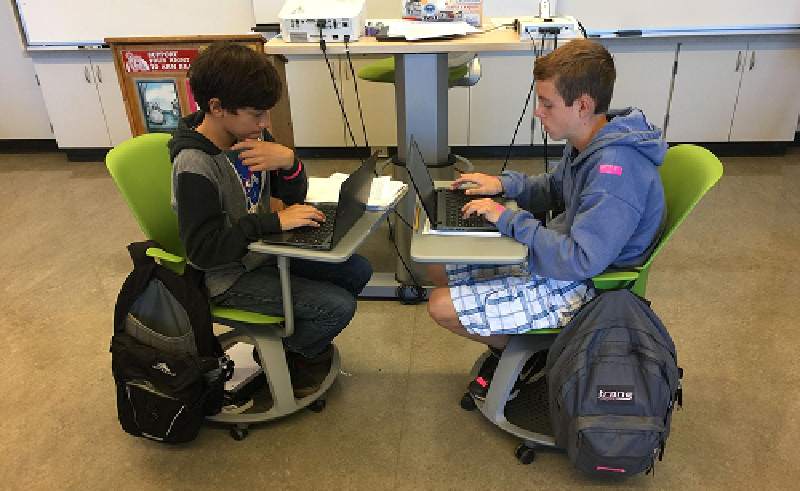For all you teachers bringing the joy of NaNoWriMo to your students, we’ve got a guest post from Wyatt Bessing. Wyatt is a writer and educator who has guided middle and high school students through NaNoWriMo since 2012. Today he shares how he uses the “Sparking An Idea” activity from our free Young Novelist Challenge workbooks to help students brainstorm. (Pro tip: this activity also works for adults!)
One of my favorite activities in the workbooks is called “Sparking an Idea.” It’s all about brainstorming, and it has students focus on the concrete task of listing twenty ideas or things, topics or characters that made them feel curious or excited, wonder or awe.
Even some of the most reluctant writers, given half an hour to think about it and join a hilarious group discussion in which the wackiest of ideas—ants with lasers for eyes, talking shadows?—were shared and compared, would go on to write detailed lists of fears and curiosities, full of ghosts and demons, football and earwax, parallel dimensions, and, of course, cookies.
It’s anything goes, the weirder the better. After all, the whole notion of writing 50,000 words in a month (or, for my students, even five thousand in a month) is so supremely silly that outrageous ideas like these totally fit the bill. The brave brainstorm—pouring out ideas with no editing or erasing, duct taping shut the mouth of the internal editor, letting out all those unthinkable thoughts—frees the mind to prepare to pounce on the wild worlds emerging unbidden from the unbridled brain throughout November.
Then comes the final act of the activity: gorilla gluing these notions together into randomly selected sets of three to make story ideas. This transforms it into a game that students love.
Heck, even I love it. A talking shadow with lasers for eyes who befriends a ghost? A football playing demon from Dimension X who lives on the earwax of his victims? A depressed spirit girl who hoards cookies and feeds them to her army of mecha spiders so she can get revenge on the school bully? All perfectly valid story ideas.
Here’s the surprising part. At first I’d worried letting students create random tales would lead to unfulfilling and silly narratives, that I’d have to provide better structure to get them to dig deeply into their real struggles and emotions. On the contrary, I find this spontaneous brainstorm often leads naturally to authentic, emotional spaces and gives students the implicit permission to go there. If I, the boring old teacher, had tried to guide them directly toward writing about traumatic personal things or their authentic emotions, they might have laughed at me or mocked the idea, but this play gives them a safe way to go into those darker places without feeling like an adult is looking over their shoulder the whole time.
Teenagers have a way of naturally finding that stuff anyway. They just need me to get out of their way, let their wild minds play with ideas as they discover the jagged juxtapositions that break wide open the subconscious conflicts, tensions, and depth of story all around us.
Wyatt Bessing is a writer and educator in Petaluma, CA. He has guided middle and high school students through NaNoWriMo since 2012. He writes on education, nature, and the creative process on his Substack.

